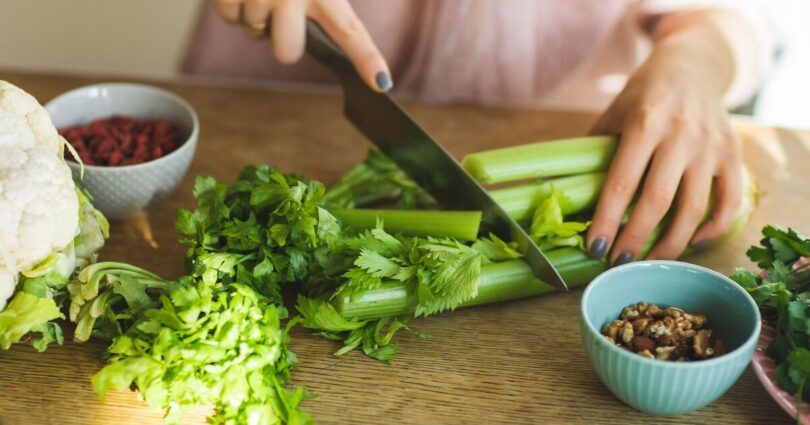Storing food in the correct manner can lead to tasty and cost-effective results.
This is the case with all sorts of basic perishable ingredients, such as fruit, potatoes, bread, herbs and others.
Celery can be used in lots of different dishes, including pasta, breads, tagines, casseroles, stews, pies and roast dinners.
It can also be eaten on its own, perhaps with a hummus dip.
Experts have suggested keeping hold of the plant in a certain way to ensure it lasts longer and retains its distinctive crunch.
This needs to be done in a certain place and using a specific material.
Life Before Plastic says on its website: « It can be a real shame when you go to enjoy a celery stick and it is all soft with no crunch.
« To prevent this, wrap the celery in aluminium foil before storing it in the fridge to keep its crispness. »
If this cannot be done, experts suggest a dish in which softer celery could be used.
The site adds: « If it does go mushy, you can always use the celery for making homemade veggie broth. »
Overall, specialists say that having to throw away food is « money straight in the bin », and also « bad news for overconsumption and our environment ».
It is well known that knowing how to store your food properly ensures « maximum freshness, lower energy bills, and reduces food waste ».
Celery has many benefits. It is rich in phthalide, which relaxes artery walls to help blood flow and lower blood pressure.
WebMD notes that research in mice suggests that a compound called DL-3-n-butylphthalide made from seeds in the flowers of the celery plant also « improves learning, thinking, and memory ».
To grow it, the RHS advises planting it in a sunny spot with « fertile, moisture-retentive soil ».
Experts added: « Avoid sites where the soil dries out rapidly. Remove any weeds and dig in lots of well-rotted manure or garden compost, to improve moisture retention. »
Source link








